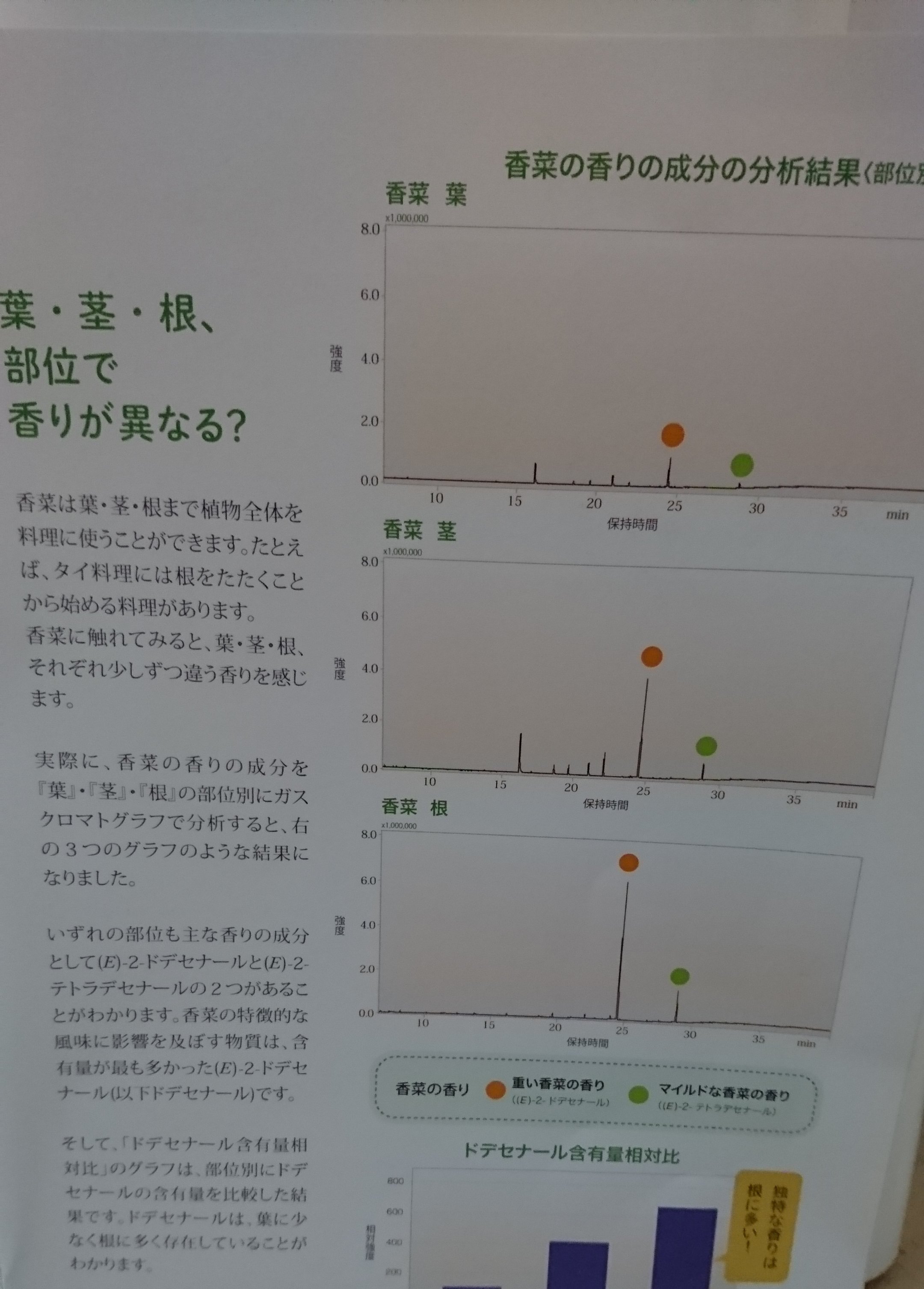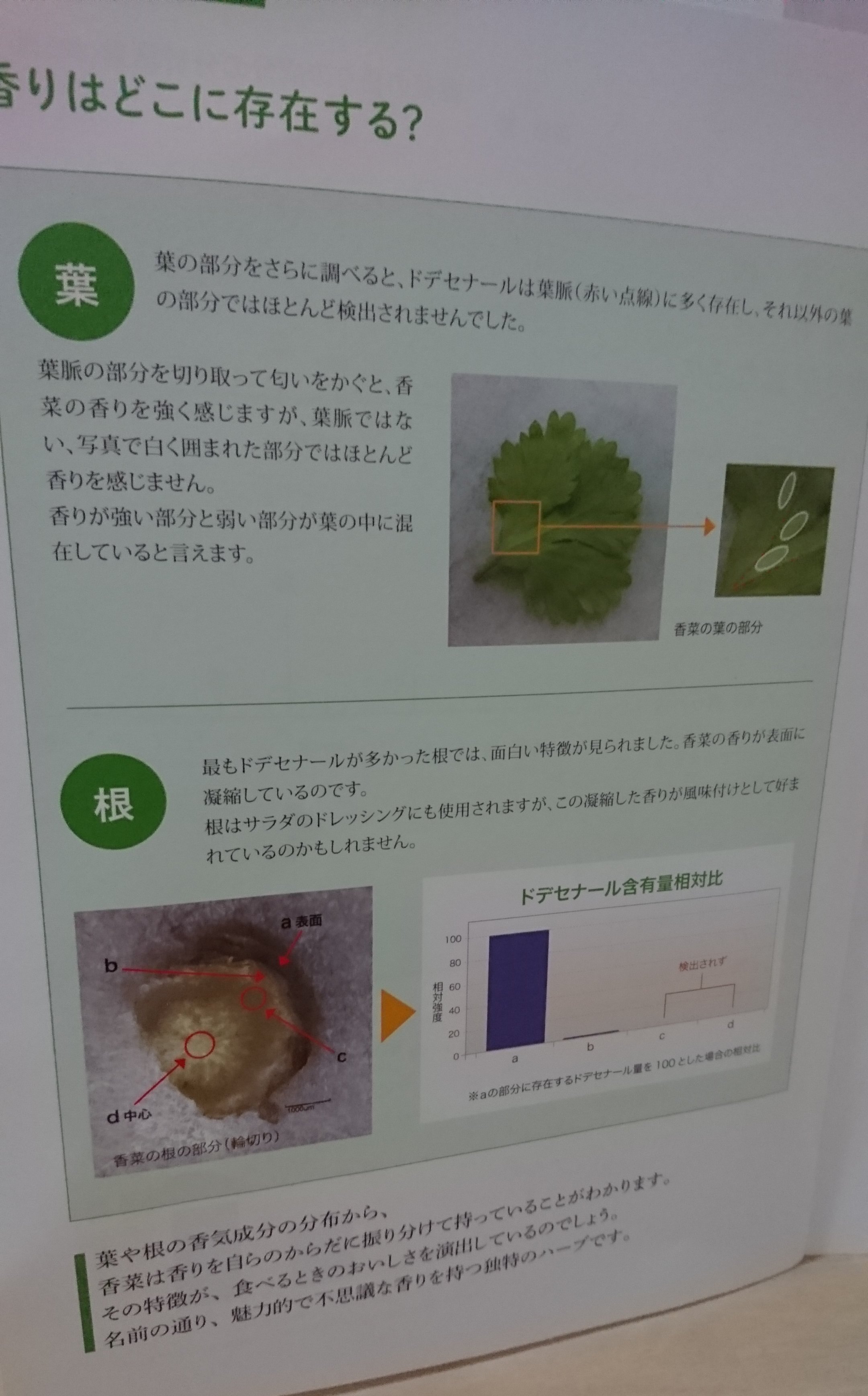今日は、好き嫌いがパクッと分かれる、パクチーのお話し。
「あなたのパクチースイッチはいつ?」
※パクチースイッチとは、パクチーに目覚めたという意味です。
私自身は、葉っぱものが好きなので、最初からそんなに違和感がなかったのですが、それでも、あるお店の南インドカレーに入ってたパクチーを口にした瞬間、これだ!と思いました。それ以来、半ば中毒のようにパクチーを食べてます。
そんなパクチースイッチが入るのは、どうやら自分だけではなくて、それどころか、最初は匂いや味が受け付けられず嫌煙していたのに、ある日突然、美味しい料理のおかげで好きになった方がたくさん。
今、苦手な方も、どこでスイッチが入るか分かりませんよ。
是非美味しい、パクチー料理と出会えますように!
さて、そんなパクチーは、香菜、コリアンダー、カメムシ草など色々な言われ方をします。
パクチーはタイ語(中国語っぽいですが)、コリアンダーは英語(韓国語っぽいですが)、香菜は中国語、カメムシ草は日本語です。※ここではパクチーにします。
パクチーは、セリ科の植物で、原産地は主に東地中海です。
初夏に白い花が咲きます。料理に使われるパクチーは葉や根の部分なのですが、暑い夏に食べてることが多いように思います、気のせいかな。
しかし、実は、夏には、パクチーとしての食べころの旬は過ぎてます(笑)
パクチーのあの独特の香り、私にはたまらないのですが、一方では、カメムシといわれるだけのことはありますね。その香りの成分は、(E)-2-ドデセナールと(E)-2-テトラデセナールの仕業。
- (E)-2-ドデセナールは重い香り
- (E)-2-テトラデセナールマイルドな香り
だそうです。そんな難しいこと言われても分かりませんが(笑)、どうやら、重い香りの成分は根元にたくさん入ってるみたいです。
葉でも十分、あの香りしますけど、根はもっと匂うということです。そして、葉は、葉脈以外に匂い成分が多く含まれ、根は、表面に匂い成分が多く含まれてます。
パウダーとして使われるコリアンダーは、花が咲いた後の果実の部分を乾燥させたものなので、さっきの匂い理論からいくと、全然匂わないというのは正しいのです。
苦手な人は、コリアンダーパウダーで試してみては。
English
「about pakuchi @spiceLesson」
Today, my likes and dislikes will separate from Park, talk about Pakuchi.
"When is the Pakuchi switch?"
There was a question.
※Pakuti switch means that I woke up to Pakuchi.
I myself like shuri chrysanthemums, spinach and leaves,
Although there was not such a sense of incongruity from the beginning, still,
It is this moment when I talked about the parchi entering South Indian curry! I tought.
Since then, it is said to eat Pakuchi like mid-poisoning.
Apparently it is not only himself that such a Pakuchi switch enters,
Among the participants, the smell and taste were not accepted at the beginning at first, although they were disgusted,
Suddenly, there are a lot of people who liked with delicious food.
Now those who are not good, I do not know where the switch will go.
I hope you will find a delicious, bakery dish!
Well, such Pakuchi will do various ways of being told, such as coriander, aroma, bamboo grass.
Pakuchi is Thai (like Chinese), Coriander is English (like Korean)
Kana is Chinese and Bugendella is Japanese.
※ I will make it fresh.
Pakuchi is a plant of the family Seriaceae, the place of origin is mainly in the eastern Mediterranean.
White flowers bloom in the early summer, but Pakuchi comes in the dishes are leaves and roots,
Have you eaten it in hot weather? To tell the truth, in the summer, the season of eating as a fresh pasta has passed
That unique scent of pakuchi, I can not stop but on the other hand, it is only called a bug
There are things. The component of the scent is the work of (E) -2-dodecenal and (E) -2-tetradecenal.
- (E) -2-dodecenal has a heavy scent
- (E) -2-tetradecenal Mild scent
It is said that. I do not know even if such a difficult thing is said (laugh)
Apparently, there seems to be a lot of heavy scent ingredients at the base.
Leaves are enough, that fragrance, but the root smells more.
And leaves contain many odorous ingredients besides vein veins, and the roots contain a lot of odorous components on the surface.
Coriander used as a powder is a dried fruit part after flowers bloom
So it is right that it does not smell at all as it goes from the theory of smell just before.
If you are not good at it, try it with coriander powder.



